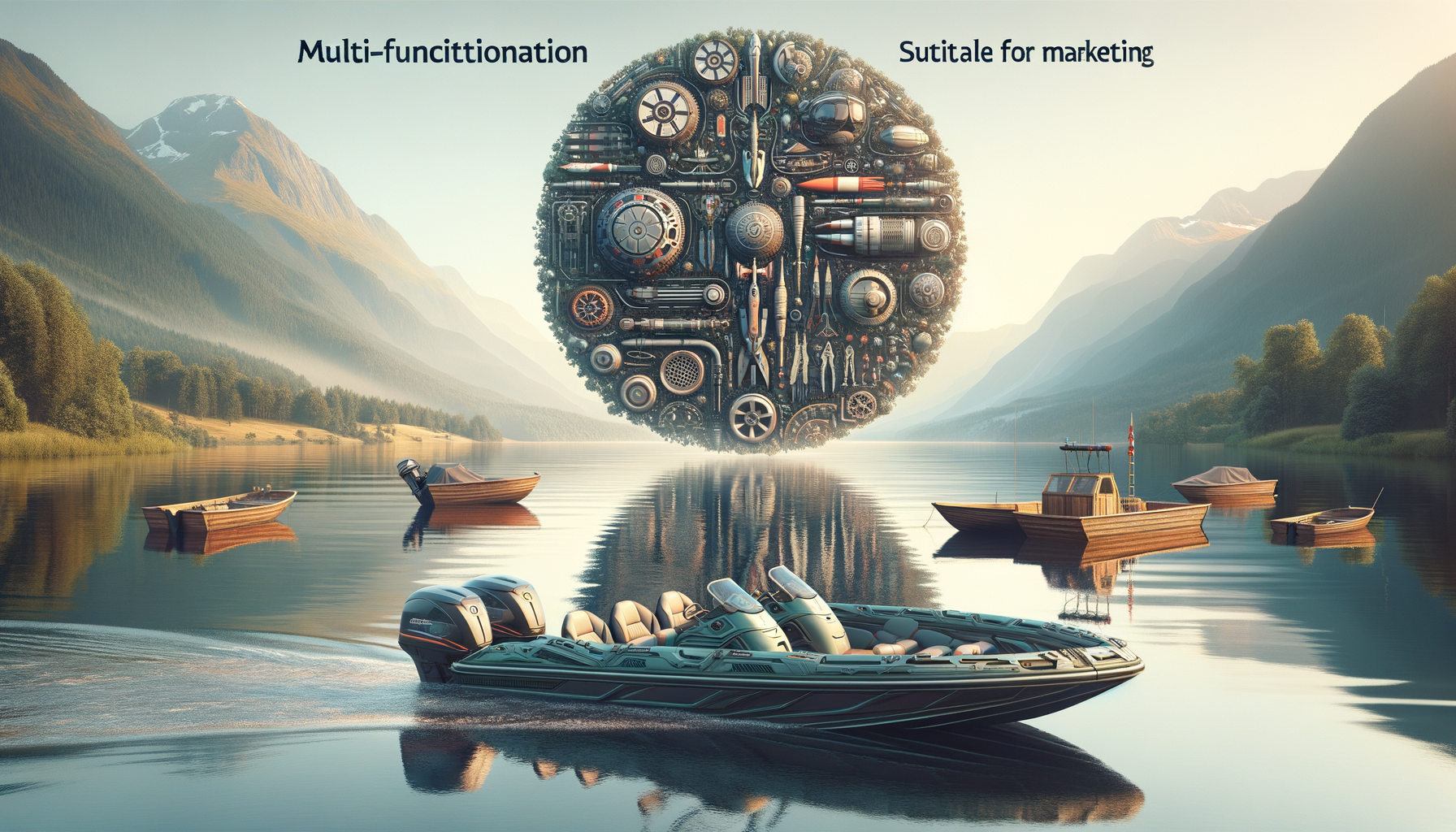Dive Into the Possibilities of the Versatile Small Watercraft
The small watercraft, adored by fishing enthusiasts and leisure seekers, is a testament to the wonders of convenience and functionality.

The Rise of Small Watercraft: A Historical Perspective
Small watercraft have long been a staple in maritime history, evolving from simple canoes to the modern, multi-functional vessels we see today. Initially, these boats were crafted from natural materials like wood and animal hides, serving as essential tools for fishing and transportation. Over time, advancements in technology introduced new materials such as fiberglass and aluminum, revolutionizing the design and functionality of these vessels.
Their popularity surged in the mid-20th century when recreational boating became a popular pastime. This era saw the introduction of outboard motors, which significantly enhanced the speed and maneuverability of small watercraft. Today, they are cherished for their versatility, being used for everything from leisurely cruises to competitive sports. As we delve deeper into the capabilities of these watercraft, it’s clear that their evolution is a testament to human ingenuity and adaptability.
Versatility on the Water: How Small Watercraft Serve Multiple Purposes
One of the most appealing aspects of small watercraft is their versatility. These vessels are designed to cater to a wide range of activities, making them a popular choice for both casual and serious boating enthusiasts. Whether you are interested in fishing, water sports, or simply enjoying a day on the water, a small watercraft can accommodate your needs.
For fishing enthusiasts, these boats offer the perfect platform for accessing both shallow and deep waters. Their compact size allows for easy navigation in narrow channels and secluded fishing spots. Additionally, many models come equipped with features such as rod holders, live wells, and GPS systems to enhance the fishing experience.
Beyond fishing, small watercraft are also ideal for water sports. Their lightweight design and powerful engines make them suitable for activities like water skiing and wakeboarding. The ability to quickly accelerate and maneuver allows for thrilling experiences on the water.
Moreover, small watercraft are perfect for leisurely pursuits. Whether you’re exploring serene lakes or cruising along coastal areas, these boats provide a comfortable and enjoyable ride. With options for seating, sunshades, and even small cabins, they offer a level of comfort that enhances the overall boating experience.
Environmental Impact and Sustainability of Small Watercraft
In recent years, the environmental impact of boating has become a significant concern. Small watercraft, however, offer several advantages in terms of sustainability. Their smaller size typically means they consume less fuel compared to larger vessels, resulting in a reduced carbon footprint.
Many manufacturers are now focusing on eco-friendly designs, incorporating electric or hybrid engines that minimize emissions. These advancements not only benefit the environment but also reduce operating costs for boat owners. Additionally, the use of sustainable materials in construction is becoming more common, further enhancing the eco-friendliness of small watercraft.
Furthermore, the versatility of these vessels means they can be used in a variety of settings, reducing the need for multiple boats. This adaptability contributes to a more sustainable approach to boating, as it minimizes the resources required for production and maintenance.
Safety and Accessibility: Making Small Watercraft User-Friendly
Safety is a paramount concern for any watercraft user, and small boats are no exception. Fortunately, modern designs prioritize safety features that make these vessels accessible to a wide range of users. From beginners to seasoned sailors, small watercraft are equipped with features that enhance safety and ease of use.
Many models come with built-in flotation devices and non-slip surfaces to prevent accidents. Additionally, advancements in navigation technology, such as GPS and sonar systems, help users navigate safely, even in unfamiliar waters. These technologies are particularly beneficial for novice boaters, providing them with the confidence to explore new areas.
Accessibility is another key aspect of small watercraft. Their lightweight and compact design make them easy to transport and launch, allowing users to access a variety of water bodies with minimal effort. This ease of use makes them an attractive option for families and individuals looking to enjoy a day on the water without the hassle of managing a larger vessel.
The Future of Small Watercraft: Innovations and Trends
As technology continues to advance, the future of small watercraft looks promising. Innovations in materials and design are paving the way for more efficient and sustainable boats. One notable trend is the increasing use of smart technology, which allows for better navigation, communication, and safety features.
Moreover, there is a growing interest in modular designs that offer customizable options for boat owners. These designs allow users to adapt their watercraft to suit specific activities, whether it’s fishing, leisure, or sports. This flexibility not only enhances the user experience but also extends the lifespan of the vessel by allowing it to evolve with the owner’s needs.
Another exciting development is the integration of artificial intelligence and automation in boating. These technologies promise to make navigation and operation more intuitive, reducing the learning curve for new users. As these innovations continue to emerge, small watercraft will undoubtedly remain a popular choice for those looking to explore the water.